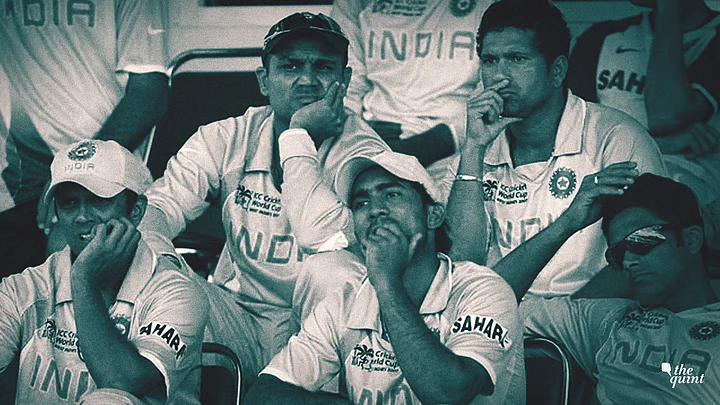The countdown to the ICC Cricket World Cup 2019 is into its final stretches. The quadrennial showpiece event has been a source of immense joy for Indian cricket – twice, in 1983 and 2011, India rose above the competing pile to be crowned world champions, while happy memories from other campaigns such as 2003 remain fresh in memory.
But for all their success, India have also had to deal with the ignominy of failure, having exited the competition in the first round of four occasions.
Two of these instances came in the first two editions of the World Cup, in 1975 and 1979, when Indian cricket was yet to stamp itself on the world stage, while in 1992, India bottled the second half of a lengthy round-robin phase.
The nadir though, undoubtedly, was 2007, when India’s ‘golden generation’ suffered the painstaking embarrassment of an early trip back home.
1975, 1979: Late to the Party
It didn’t come as much of a surprise when India failed to make an impression during the first two editions of the World Cup. Prior to the inaugural tournament, in 1975, India had played all of two ODIs –and the lack of experience was evident.
India won only once in six matches over 1975 and 1979, crashing out in the group stage on both occasions; that solitary win came against East Africa, the whipping boys of the 1975 edition.
It wasn’t all that bad an effort at the first time of asking – after an appalling surrender in the tournament opener against England, headlined by Sunil Gavaskar’s infamous 36 not out of 174 balls (yes), India gave New Zealand a run for their money in the group decider. It took a stoic unbeaten 114 from Glenn Turner for the Kiwis to negate a 231-run chase, which they reached with only seven balls to spare.
S Venkataraghavan was the captain for both the editions, and eight of the players travelled to England for both – yet India fared much worse on the second of the trips, being comprehensively beaten in all three games, including a 47-run loss to debutants Sri Lanka.
1992: Sachin’s Debut, and Little Else
The 1992 World Cup was one of several firsts. Coloured clothing The 1992 World Cup was one of several firsts. Coloured clothing, floodlights, white ball, TV umpire – all made their maiden World Cup bows over the summer Down Under, jointly hosted by Australia and New Zealand. As did one Sachin Tendulkar.
Oh, and we also saw India and Pakistan lock horns at the world stage for the first time.
Tendulkar, who would go on to make a host of World Cup records his own over the next two decades, began as he meant to go, finishing as India’s second-highest scorer with 283 runs, featuring three half-centuries.
India, who would go on to dominate their arch-rivals at the World Cup, claimed the first win of their proud 100 percent record against Pakistan.
Apart from that, there was little to celebrate.
The win over Pakistan had followed narrow defeats to England and Australia, by nine runs and one run respectively. After defeating Zimbabwe in their next outing, India had two wins and two losses from five matches (including a no-result against Sri Lanka) – but by losing each of their last three games, to West Indies, New Zealand and South Africa, India booked themselves an early ticket back home, and eventually ended a poor seventh in the nine-team event.
2007: The Lowest Ebb
The one that was ‘meant to be’, but instead proved to be one of the darkest chapters in Indian cricket.
This was the ‘golden generation’, in its pomp – Tendulkar, Sourav Ganguly, Virender Sehwag and Rahul Dravid were among the leading batsmen in the format, Yuvraj Singh and MS Dhoni were already established stars in the game. One insipid week, and they were condemned to a humiliating exit.
Ironically, the early flight back home came in a tournament format which was worked to ensure just the opposite; four groups of four teams each competed, with the eight ‘major’ nations split equally and paired with the ‘lesser’ ones.
Disaster struck in the very first game – the mighty batting lineup folded for just 191, and half-centuries from teenagers Tamim Iqbal, Mushfiqur Rahim and Shakib al Hasan led Bangladesh to only their second win against India.
The batsmen had fun at the expense of Bermuda, smashing a then-record 413/5 in the second game, but faced with a must-win chase of 255 against Sri Lanka, India came apart spectacularly.
The unthinkable had happened: India were out in the first round, and they would be followed by Pakistan to the exit door. The ICC didn’t think twice before abandoning the new, inclusive format.
(At The Quint, we question everything. Play an active role in shaping our journalism by becoming a member today.)
